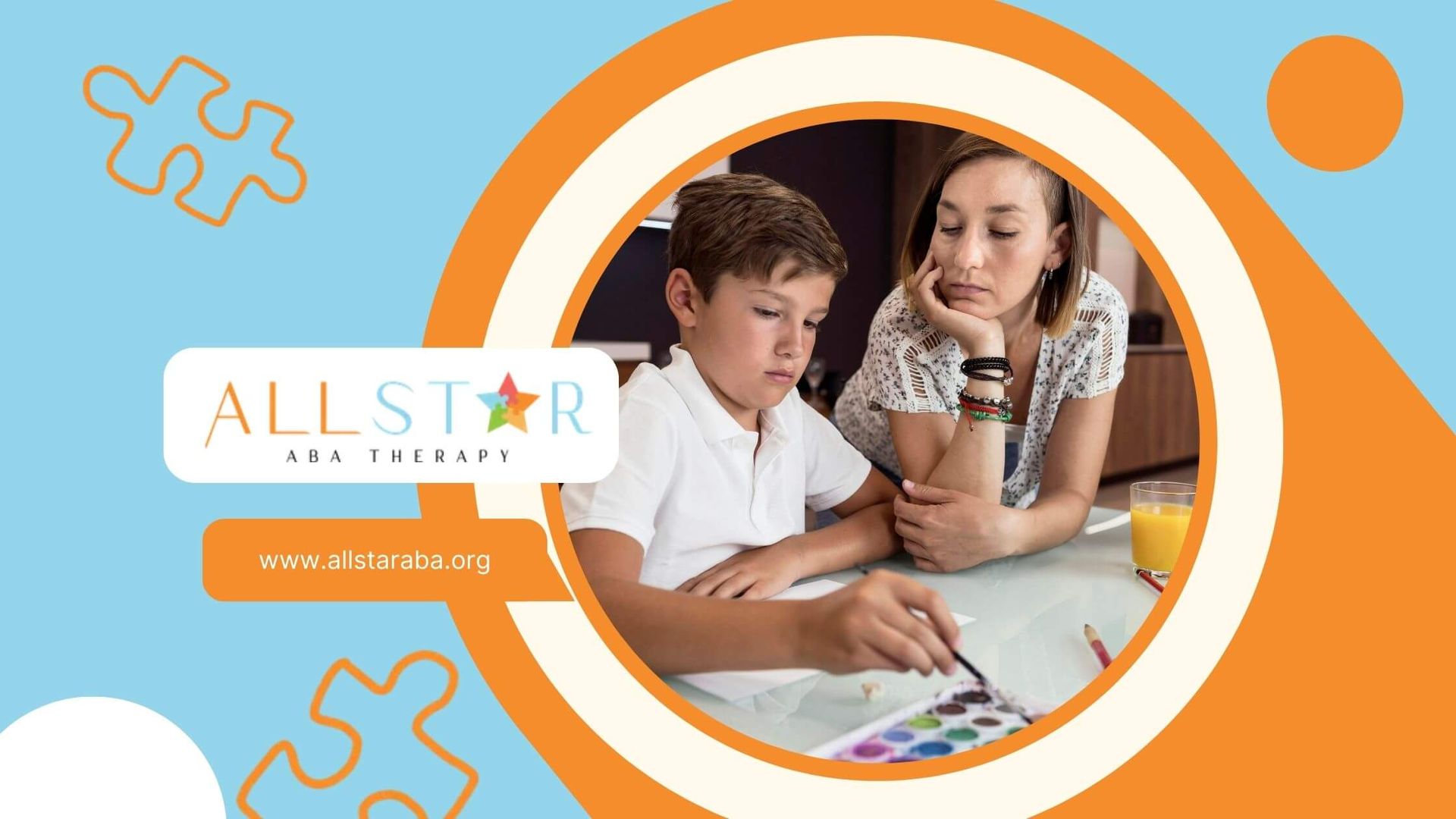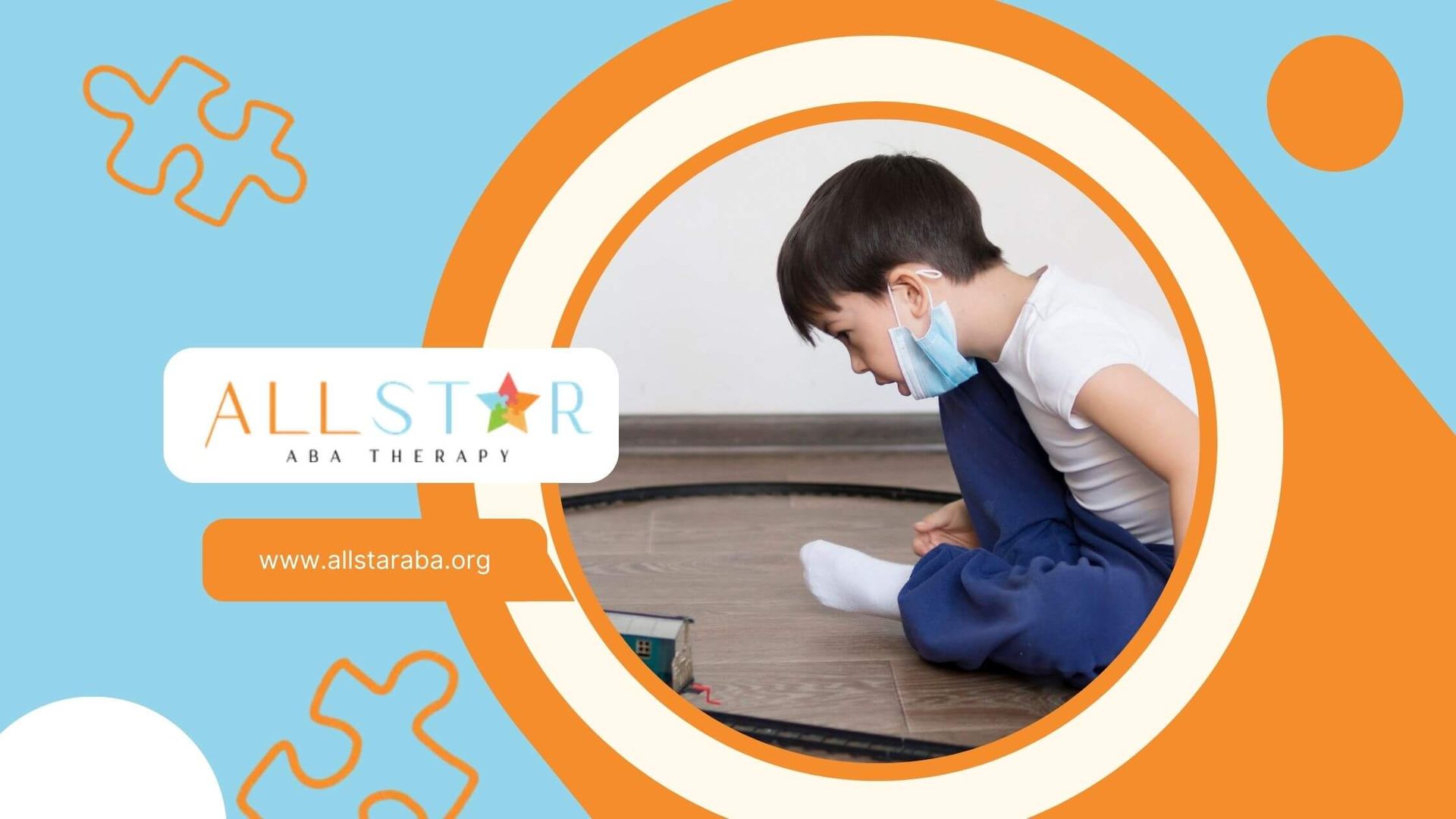New Paragraph
Top Benefits of ABA Therapy for Autism
Autism Spectrum Disorder (ASD) is a neurodevelopmental disorder that affects communication, social interaction, and behavior. Children with autism often face unique challenges in their everyday lives, requiring specialized treatment and support. One of the most effective and widely recognized approaches to autism therapy is Applied Behavior Analysis (ABA).
ABA therapy has been proven to make a significant difference in the lives of children with autism, helping them develop essential life skills, improve social interaction, and reduce problem behaviors. In this blog, we will explore the key benefits of ABA therapy for autism and how it can make a positive impact on the lives of children and their families.
Understanding ABA Therapy
Before we dive into the benefits of ABA therapy, let's first gain a clear understanding of what ABA therapy is and how it works. ABA therapy, short for Applied Behavior Analysis, is a type of therapy that focuses on analyzing and modifying behavior through direct instruction and positive reinforcement. It is a scientifically proven intervention that is widely recognized as the gold standard treatment for autism spectrum disorder.
ABA therapy involves breaking down complex skills into smaller, more manageable steps, teaching new skills, and addressing problem behaviors. Through repetitive practice, consistent reinforcement, and data-driven analysis, ABA therapy helps children with autism achieve meaningful, positive behavioral changes.
The Basics of ABA Therapy
Behavior analysis is at the core of ABA therapy. It is based on the principle that behavior, both observable and measurable, is influenced by environmental factors. ABA therapy utilizes behavior analysis techniques to identify the function or purpose of behavior and develop strategies to modify behavior effectively. ABA therapy sessions typically take place in a one-on-one setting, where a certified behavior analyst works closely with the child.
One of the fundamental components of ABA therapy is the development of an individualized treatment plan. ABA therapy recognizes that each child with autism has unique strengths, challenges, and needs, and therefore requires a personalized approach to therapy. The treatment plan is tailored to address specific goals and objectives, which may include improving communication skills, enhancing social interaction, developing daily living skills, or reducing problem behaviors.
ABA therapy involves the systematic implementation of behavioral interventions to target the desired behavioral changes. These interventions may include positive reinforcement, prompting and fading techniques, shaping behavior through successive approximations, and behavior chaining. ABA therapy sessions are structured and typically occur on a regular basis, ensuring consistency and continuity of treatment.
The Role of ABA Therapy in Autism Treatment
ABA therapy plays a pivotal role in the comprehensive treatment of autism spectrum disorder. It aims to improve the quality of life for children with autism by addressing their unique needs and challenges. ABA therapy is essential in fostering social interaction, communication abilities, independent living skills, and reducing problem behaviors.
Social skills are an area of significant concern for children with autism. ABA therapy targets social skills by helping children understand social cues, improving communication skills, and encouraging eye contact. ABA therapy assists children in learning appropriate social behaviors, interacting meaningfully with peers, and navigating social situations more effectively.
ABA therapy also focuses on enhancing independent living skills, such as self-care, following clear directions, and problem-solving in daily life. It helps children with autism develop functional skills that empower them to live more independently and adapt to various environments.
Problem behaviors, such as aggression, self-injury, or repetitive behaviors, can significantly impact the daily life of children with autism. ABA therapy provides effective behavior intervention strategies, utilizing positive reinforcement, to reduce these problem behaviors. The therapy addresses the underlying causes of problem behaviors, teaches appropriate and functional alternative behaviors, and helps children lead a more fulfilling, manageable life.
Key Advantages of ABA Therapy
Now that we understand the basics of ABA therapy and its role in autism treatment, let's explore some of the key advantages of ABA therapy for children with autism. ABA therapy offers a range of benefits that extend beyond the treatment of autism itself. It empowers children, equips parents, and supports the entire family in understanding and managing autism spectrum disorder more effectively. Let's delve deeper into these advantages and explore how ABA therapy positively impacts the lives of children with autism and their families.
ABA Therapy and Improved Social Skills
One of the significant benefits of ABA therapy is its positive impact on social skills development in children with autism. ABA therapy helps children learn social cues, understand appropriate social behavior, and develop effective communication skills. Here are some ways ABA therapy facilitates improved social skills in children with autism:
- ABA therapy targets social interaction skills, helping children initiate and maintain conversations, engage in joint play, and develop friendships.
- ABA therapy focuses on eye contact, as it is an essential part of social communication. The therapy encourages children to make eye contact, enhancing their ability to engage in social interactions.
- ABA therapy teaches children with autism to recognize social cues, such as facial expressions, body language, and gestures, enabling them to better understand social situations and respond appropriately.
- ABA therapy utilizes behavioral interventions to encourage positive social behaviors, such as turn-taking, sharing, and empathy, supporting children in developing more meaningful social relationships.
- ABA therapy promotes social skills in natural environments, allowing children to practice and generalize their skills beyond therapy sessions, leading to more successful social interactions in various settings.
ABA Therapy and Enhanced Independence
Independence is a crucial aspect of a child's development, and ABA therapy plays a significant role in fostering independent living skills in children with autism. ABA therapy provides targeted intervention and training to help children develop essential life skills necessary for daily life. Here's how ABA therapy enhances independence in children with autism:
- ABA therapy focuses on teaching self-care skills, such as dressing, personal hygiene, and mealtime routines, enabling children to care for themselves independently.
- ABA therapy assists children in following clear directions, both verbal and visual, helping them navigate daily tasks and routines more effectively.
- ABA therapy supports children in problem-solving and decision-making, empowering them to become more independent in daily life situations.
- ABA therapy incorporates behavioral intervention strategies to teach functional skills, such as money management, time management, and organization, essential for independent living.
- ABA therapy encourages parents and caregivers to play an active role in therapy sessions, equipping them with behavioral analysis tools and strategies to create a supportive environment that fosters independent living skills in children with autism.
ABA Therapy and Problem Behavior Reduction
Problem behaviors can significantly impact the daily life of children with autism and their families. ABA therapy is highly effective in reducing problem behaviors and replacing them with more appropriate and functional behaviors. Here are some ways ABA therapy helps in problem behavior reduction:
- ABA therapy utilizes positive reinforcement techniques, rewarding children for displaying desired behaviors, while ignoring or redirecting problem behaviors. This approach helps children understand the consequences of their behaviors and promotes positive behavioral changes.
- ABA therapy identifies the underlying causes or functions of problem behaviors, such as communication needs, sensory issues, or social difficulties, and addresses them through targeted interventions.
- ABA therapy incorporates behavior intervention plans, tailored to the individual needs of each child, which outline strategies and techniques to reduce problem behaviors and promote positive alternatives.
- ABA therapy empowers parents and caregivers with behavioral analysis tools, enabling them to effectively manage problem behaviors in daily life situations.
- ABA therapy involves regular communication and collaboration between behavior analysts, therapists, parents, and educators to ensure a comprehensive and consistent approach to problem behavior reduction.
ABA Therapy: Fostering Better Parent-Child Interactions
ABA therapy not only benefits children with autism but also supports family members in understanding and managing autism spectrum disorder. ABA therapy fosters better parent-child interactions, equips parents with essential skills, and provides innovative parenting solutions. Let's explore how ABA therapy helps strengthen the bond between parents and children with autism, creating a supportive environment for growth and development.
How ABA Therapy Helps Parents
Parents play a critical role in the success of ABA therapy. ABA therapy recognizes this and offers support and training to parents, empowering them to play an active role in their child's therapy. Here's how ABA therapy benefits parents:
- ABA therapy equips parents with clear directions and strategies in managing daily life situations, helping them navigate challenges and support their child's progress.
- ABA therapy provides parents with a deeper understanding of autism spectrum disorder, its challenges, and the positive impact of therapy, enabling them to become informed advocates for their child.
- ABA therapy supports parents in developing effective communication skills with their child, fostering understanding, and strengthening the parent-child bond.
- ABA therapy emphasizes pivotal response training, a naturalistic intervention that encourages parents to create opportunities for their child to practice new skills in natural settings, such as home or community, leading to more effective skill acquisition.
- ABA therapy helps parents recognize the benefits of therapy sessions beyond the therapy setting, promoting the generalization of skills and positive behaviors in daily family life.
Strategies for Parents in ABA Therapy
ABA therapy encourages parents to actively participate in their child's therapy journey, providing them with innovative parenting solutions and strategies. Here are some strategies for parents in ABA therapy:
- ABA therapy recommends providing regular, consistent therapy hours to promote skill acquisition and behavior change. Setting aside dedicated time for therapy sessions, both in therapy centers and at home, helps maintain progress and continuity in treatment.
- ABA therapy emphasizes direct instruction, encouraging parents to implement therapy strategies in daily life situations. This includes reinforcing positive behaviors, breaking down tasks into smaller, achievable steps, and providing clear directions to support their child's learning and independence.
- ABA therapy suggests using positive reinforcement techniques, such as praise or rewards, to encourage desired behaviors and motivate children with autism in their daily activities.
- ABA therapy promotes the involvement of family members in therapy sessions, equipping them with the knowledge and skills to support their child outside of therapy sessions. This collaborative approach ensures a consistent environment for the child's development and reinforces therapy goals in different settings.
- ABA therapy provides innovative parenting solutions, tailored to the needs of each child, to address specific challenges and support their overall development and well-being.
ABA Therapy and School Readiness
School readiness is a crucial milestone in a child's life, and ABA therapy plays a significant role in preparing children with autism for success in the classroom. ABA therapy focuses on developing essential skills necessary for school life, such as social interaction, communication abilities, and independent living skills. Let's explore how ABA therapy contributes to school readiness in children with autism.
Preparing Children with Autism for School
ABA therapy plays a vital role in preparing children with autism for the challenges they may encounter in a school environment. ABA therapy sessions are designed to target specific skills essential for successful school integration. Here's how ABA therapy prepares children with autism for school:
- ABA therapy equips children with autism with social skills necessary for classroom interaction, such as listening to the teacher, following directions, and engaging with peers in age-appropriate play.
- ABA therapy focuses on communication skills, including social cues, eye contact, and positive reinforcement, to ensure children can effectively express themselves, understand others, and engage in meaningful conversations in a school setting.
- ABA therapy helps children with autism understand social situations, enabling them to adapt and respond appropriately in the classroom and playground. This includes teaching problem-solving skills, conflict resolution, and recognizing and managing emotions.
- ABA therapy aids in the development of independent living skills, such as self-regulation, organization, and self-help skills, allowing children to navigate daily activities and routines at school more independently.
- ABA therapy enhances functional skills, enabling children to engage in age-appropriate academic tasks, follow classroom routines, and participate in classroom activities effectively.
ABA's Role in Developing 'Real-World' Skills
In addition to school readiness, ABA therapy plays a crucial role in developing essential "real-world" skills in children with autism. ABA therapy focuses on functional skills that are crucial for daily life, independent living, and future success. Here's how ABA therapy fosters the development of these real-world skills:
- ABA therapy aims to instill essential life skills, including problem-solving, decision-making, self-regulation, and communication, that are pivotal for daily life situations.
- ABA therapy places emphasis on communication abilities, fostering effective social communication, clear expression of needs, and understanding of instructions in real-world contexts.
- ABA therapy sessions incorporate pivotal response training, which facilitates skill acquisition in natural environments and situations, making it more likely for children with autism to apply their skills in everyday life.
- ABA therapy incorporates innovative parenting solutions, providing guidance and strategies for family members to reinforce functional skills outside of therapy sessions, ensuring generalization of skills in daily life.
- ABA therapy emphasizes applied behavioral analysis, which focuses on teaching functional skills that are directly applicable to real-world situations, empowering children with autism to become more independent and successful in daily life.
ABA Therapy: Evidence-Based and Personalized
When seeking therapy for autism spectrum disorder, it is essential to choose an intervention that is evidence-based, effective, and tailored to meet the individual needs of each child. ABA therapy checks all of these boxes, making it a widely recognized and trusted treatment option. ABA therapy offers evidence-based interventions and a personalized treatment plan, ensuring children with autism receive the care they need to reach their full potential.
The Research Supporting ABA Therapy
ABA therapy is grounded in scientific research, with a wealth of evidence supporting its effectiveness in improving the lives of children with autism. Decades of research have consistently demonstrated positive outcomes and long-term benefits of ABA therapy. Here's an overview of the research supporting ABA therapy:
- ABA therapy has been endorsed by leading autism organizations, such as the Autism Society of America and the National Institute of Mental Health, as an evidence-based intervention for autism spectrum disorder.
- Numerous studies have shown that ABA therapy has a significant positive impact on communication abilities, social interaction, daily living skills, and problem behavior reduction in children with autism.
- Research has highlighted the effectiveness of ABA therapy in improving the quality of life for both children with autism and their families, promoting positive behavior changes, and enhancing functional skills.
- ABA therapy has been found to be particularly effective when intervention is initiated early, providing children with autism the opportunity to acquire essential skills during critical periods of development.
- Research supports the importance of individualized treatment plans in ABA therapy, ensuring that therapy sessions are tailored to meet the unique needs and challenges of each child with autism.
- ABA therapy's evidence-based approach ensures that certified behavior analysts deliver interventions that have been scientifically validated, ensuring the highest standard of care for children with autism.
Customization in ABA Therapy for Each Child
ABA therapy recognizes that each child with autism is unique, with individual needs, strengths, and challenges. As such, ABA therapy provides a highly customized and individualized approach to treatment, ensuring that therapy sessions are tailored to meet the specific requirements of each child. Here's how ABA therapy is customized for each child:
- ABA therapy begins with a comprehensive assessment of each child's skills, challenges, and individual needs. This assessment serves as the foundation for developing a personalized treatment plan.
- ABA therapy considers the child's age, developmental stage, communication abilities, behavior patterns, social interaction skills, and sensory needs in creating a customized treatment plan.
- ABA therapy targets specific goals and objectives, addressing areas of concern, such as communication skills, social interaction, independent living skills, or problem behavior reduction, based on the child's individual needs and family priorities.
- ABA therapy ensures that therapy hours are tailored to the child's care requirements, taking into account factors such as the intensity of intervention, the number of therapy hours, and the duration of treatment, in order to maximize progress and reach specific milestones.
- ABA therapy's personalization extends beyond individualized treatment plans, as therapy sessions are conducted in a one-on-one setting, allowing the behavior analyst to tailor interventions in real-time, based on the child's response, strengths, and challenges.
- ABA therapy's individualized approach enables clear directions, essential in overcoming difficult obstacles in the lives of children with autism, and ensures that the therapy is most effective for each child's unique needs.
Overcoming Obstacles with ABA Therapy
Children with autism often face obstacles and challenges in their daily lives, ranging from communication difficulties to problem behaviors. ABA therapy is specifically designed to help children with autism overcome these obstacles, empowering them to reach their full potential. Let's explore how ABA therapy effectively addresses and overcomes obstacles associated with autism spectrum disorder.
ABA Therapy and Overcoming Challenges
ABA therapy is highly effective in addressing and overcoming difficult obstacles that children with autism encounter in their daily lives. Here's how ABA therapy helps children overcome challenges associated with autism spectrum disorder:
- ABA therapy utilizes comprehensive behavioral analysis to identify the underlying causes of problem behaviors, communication difficulties, social challenges, or sensory issues, and develops targeted interventions to address these obstacles.
- ABA therapy incorporates positive reinforcement strategies, encouraging children to replace problem behaviors with more appropriate, functional behaviors, providing them with effective tools to overcome obstacles in daily life situations.
- ABA therapy places a strong emphasis on play therapy, engaging children in activities and exercises designed to develop essential life skills, problem-solving abilities, social interaction, and communication skills, essential in overcoming obstacles.
- ABA therapy's early intervention model focuses on early functional skills training, equipping children with the necessary tools and abilities to navigate daily obstacles, foster independence, and promote positive behavioral changes.
- ABA therapy's natural environment approach exposes children to real-world situations, enhancing their social interaction abilities, problem-solving skills, and adaptability, thus supporting children in overcoming obstacles in their daily lives effectively.
How Effective is ABA Therapy for Overcoming Difficulties in Autism?
ABA therapy has been proven to be highly effective in helping children with autism overcome difficulties associated with autism spectrum disorder. Here's how ABA therapy makes a positive impact in overcoming obstacles:
- ABA therapy's intervention is highly effective in addressing problem behaviors commonly observed in children with autism, such as aggression, self-injury, or repetitive behaviors. It utilizes positive reinforcement strategies, behavior intervention plans, and play therapy to reduce problem behaviors, replacing them with more functional alternatives.
- ABA therapy's positive reinforcement techniques effectively motivate and encourage children to overcome difficulties, helping them acquire important life skills, improve social interaction, and develop more positive behaviors.
- ABA therapy's focus on play therapy engages children in activities that foster essential life skills, problem-solving abilities, social interaction, and communication, ultimately aiding in overcoming obstacles in daily life situations.
- ABA therapy's early functional skills training equips children with the necessary tools to overcome difficulties, promoting independence, and positive behavior changes in various areas of life.
- ABA therapy's natural environment focus enhances social interaction, problem-solving skills, and independence, contributing significantly to overcoming difficulties in autism spectrum disorder.
Conclusion
In conclusion, ABA therapy offers numerous benefits for individuals with autism. It helps improve social skills, enhancing their independence and reducing problem behaviors. Additionally, ABA therapy fosters better parent-child interactions, equipping parents with strategies to support their child's progress. It also plays a crucial role in preparing children with autism for school, facilitating the development of real-world skills. ABA therapy is evidence-based and personalized, backed by research and tailored to meet the unique needs of each child. While there may be challenges along the way, ABA therapy has shown to be effective in overcoming difficulties in autism. Overall, ABA therapy holds immense potential for individuals with autism, empowering them to thrive and reach their full potential.
Need Support?
We're Here to Help!
Our experienced team is ready to assist you. Reach out today to discuss how we can support your child's development and well-being.
Get started with expert ABA therapy today.








